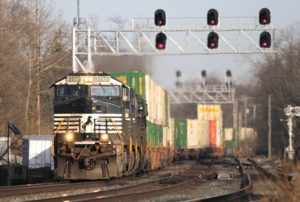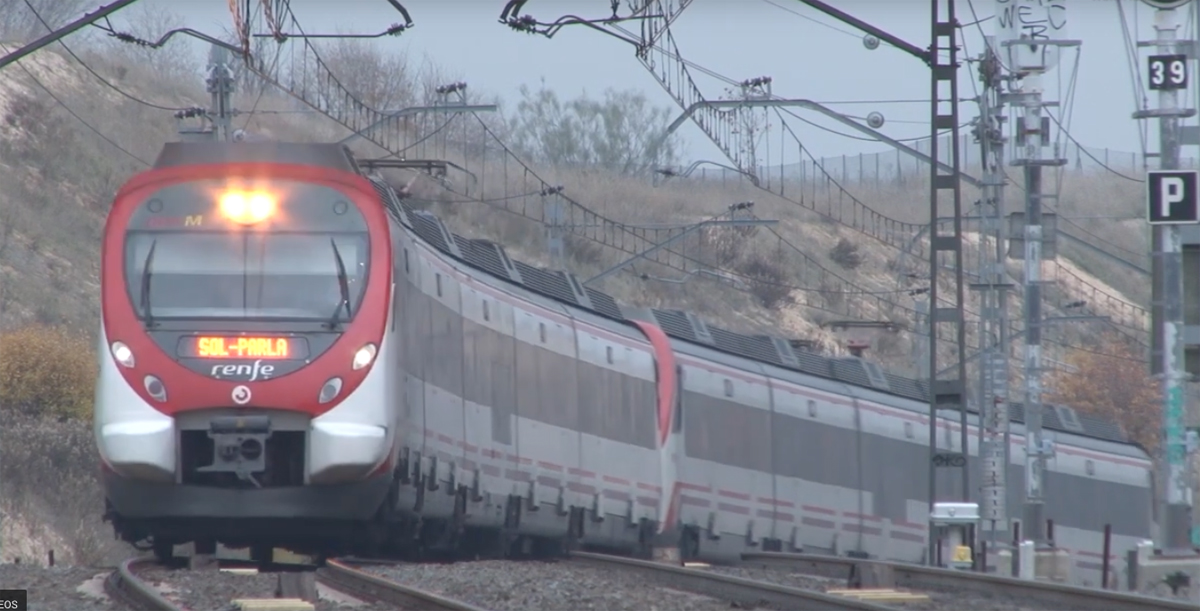
UP’s intermodal traffic is up nearly 8% so far in the third quarter, boosted by double-digit percentage growth in parcel and truckload shipments due to e-commerce and the restocking of low retail inventory.
“Demand is at or near peak-season levels,” CEO Lance Fritz says, singling out strong volume from customers Amazon, UPS, and FedEx.
The sharp swing in demand — down in April and May, then up since June — caused congestion at some of UP’s intermodal ramps, Fritz says, partly because customers let boxes dwell at terminals for longer than they should have.
UP’s intermodal trip plan compliance fell 4 points, to 74%, for the third quarter to date but has been improving recently, Fritz says.
Mark Wallace, CSX’s executive vice president of sales and marketing, says intermodal volume is up 6% for the quarter to date.
CSX saw its domestic intermodal volume begin to rise in late June. “And that has carried on,” Wallace says. “The volumes have been very, very strong — much to our delight.”
“Clearly the consumer is back, the consumer is spending,” Wallace says, noting that e-commerce traffic has been particularly strong.
CSX’s intermodal on-time performance, measured by trip plan compliance, was in the low 90% range in the third quarter to date, down from around 95% before the pandemic hit. “We are focused on getting our service levels back to where they were pre-COVID,” Wallace says, noting that the snap back in volumes presented a challenge in putting furloughed train crews back to work quickly.
NS Chief Marketing Officer Alan Shaw says the railroad’s intermodal volumes are above pre-pandemic levels thanks to domestic volume related to e-commerce, tightening truck capacity, and strong rail service.
Shaw also touted the new interline domestic service NS launched recently with BNSF Railway and UP between the Southwest and Southeast, the two fastest-growing regions of the country.
The pandemic has accelerated growth in e-commerce and the way online shopping has disrupted supply chains, Shaw says. As a result, NS believes retailers will begin keeping inventory closer to consumers. And that is a “huge opportunity” for NS because it operates the largest intermodal network in the East, Shaw notes.

Shaw and Wallace expected East Coast ports to continue to gain traffic amid the rise of manufacturing in Southeast Asia, which favors an all-water route to the East Coast via the Suez Canal.
Fritz says UP continues to work with the ports of LA and Long Beach to help them better compete with ports elsewhere on the West Coast, as well as East Coast and Gulf Coast ports, by improving the visibility of shipments that move from Asia through the ports to final destinations inland.
Fritz expects more foreign investment in manufacturing in Mexico, which would bode well for his railroad’s intermodal and carload volume over the long term.
The CSX, NS, and UP executives all said that as traffic recovers their railroads largely will be able to tack intermodal, automotive, and merchandise volume on to existing trains rather than add new train starts.
“We’re leveraging the capacity dividend we created,” NS Chief Financial Officer Mark George says of the railroad’s operational changes under Precision Scheduled Railroading, which include moving tonnage on fewer but longer trains.
The average train weight at NS is up 11% since the beginning of 2019 despite coal traffic being down by a third compared to a year ago, George notes.
UP is striking the right balance between costs and service as traffic rebounds, Fritz says. UP’s average train length topped 9,000 feet so far in the third quarter, up 28% since the railroad adopted a Precision Scheduled Railroading operating model in October 2018.
“Improvements you see across the rest of our key performance metrics demonstrate that we’re not just combining trains and cutting assets at the expense of our service product,” Fritz says.
Compared to a year ago, car-miles per day is up 4%, dwell is down 4%, and trip plan compliance for manifest traffic rose 6 points, to 72%.
CSX also continues to add volume to existing trains rather than add train starts, Wallace says.
The executives spoke at the Cowen 2020 Global Transportation & Sustainable Mobility Conference on Wednesday.













